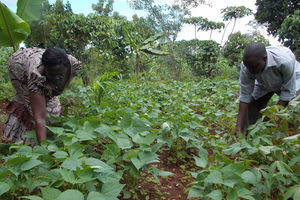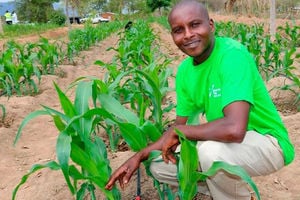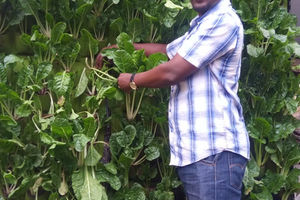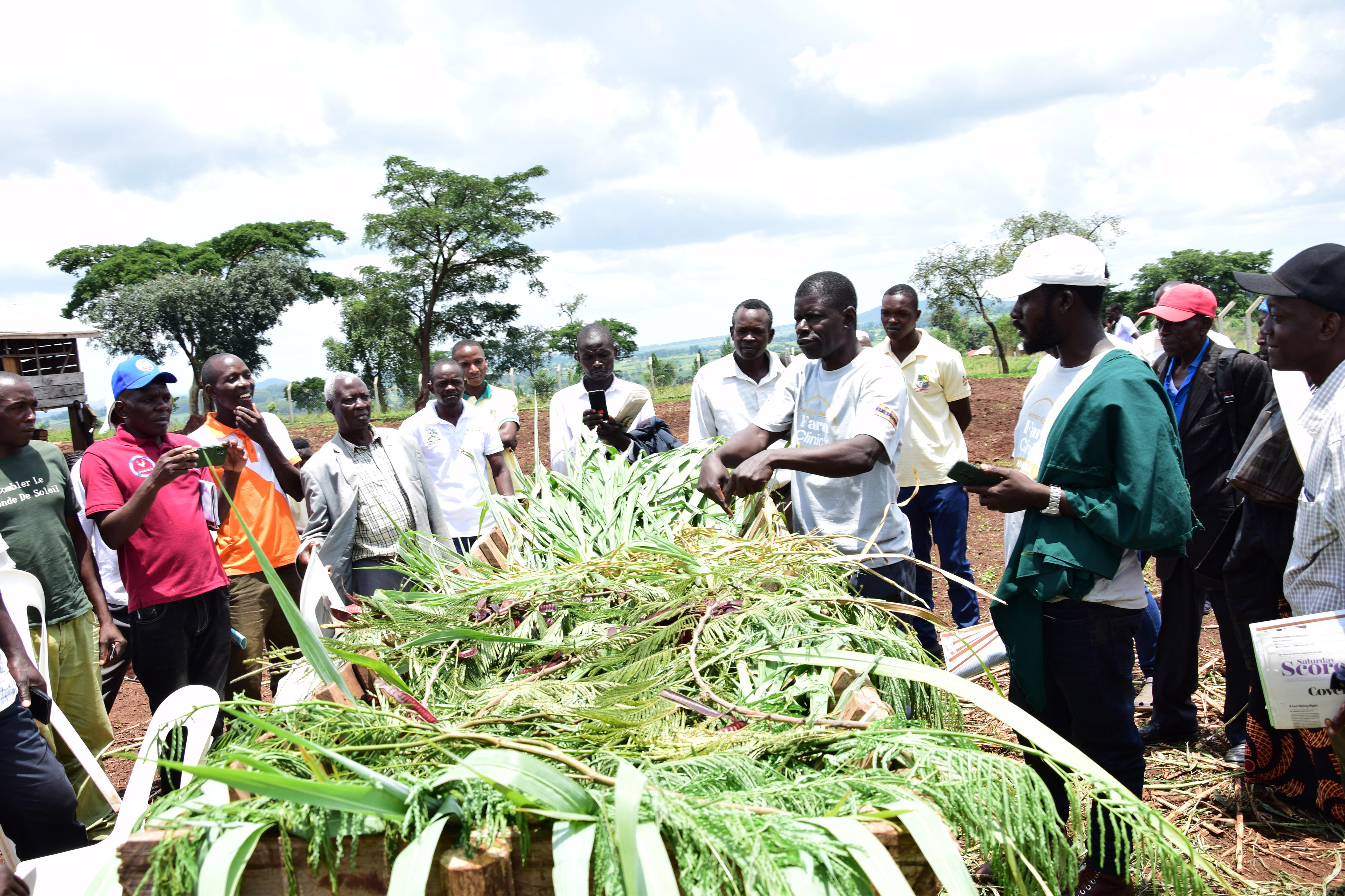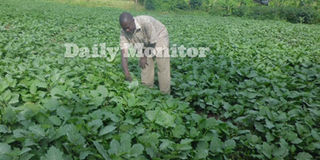
A farmer inspects his vegetable garden. There is increased interest in growing indigenous due to awareness campaigns about their nutritive value as well as the availability of market opportunities. PHOTO BY LOMINDA AFEDRARU
As rains continue to fall in many parts of the country, farmers need to figure out what to grow. Among the guidelines farmers will use to determine what to produce are crop rotation programmes, prevailing crops, previous crop pests and disease, market demand, consumer taste and the ecological conditions of the area. Vegetables Indigenous vegetables have high demand and can earn any farmer a fortune.
The vegetables include black nightshade (managu), amaranth, tomatoes, carrots, beetroots, spinach, sukumawiki, green pepper, cabbages, nakati and spider plants among others. They have become popular, especially among the urban folk, because of their high nutritional value. Amaranths for example are an excellent source of carbohydrates, vitamins A, C and B6, calcium and manganese. The spider plant is a rich source calcium, carotene and folic acid.
Nutritionists also say the vegetables are a good source of vitamin E and C, proteins, iron, among other nutrients. Short maturing crops. The vegetables are short maturing crops. Most are harvested just 45 days after planting. They are easy to grow and manage unlike “exotic” vegetables such as cabbages, since they are adapted to the local environmental conditions. The indigenous vegetables are also less vulnerable to attacks by pests and diseases compared to sukuma wiki and cabbages.
The prices for local vegetables are far much higher. These indigenous vegetables can be harvested several times before they are uprooted. Black nightshade is the most known traditional vegetable in the country. Initially, it was a wild plant, but farmers later took to growing it after learning of its health benefits.
There are two types of black nightshade. One has broad leaves and large purple berries while the other has elongated leaves and orange berries. Most consumers prefer the latter, citing its “bitter” taste. What the farmer decides to grow should thus be dictated by the consumers’ preferences. The two types of black nightshade can be sown directly in the farm or in a nursery before being transplanted in a seedbed.
To ensure uniform distribution while sowing, one should mix the seeds with ash or sand in the ratio of 1:3. The tiny seeds should be covered lightly with fine soil to enhance their germination. Agronomy The seeds germinate seven to 10 days after planting, depending on variety. The seedling should be ready for transplanting after attaining four to five true leaves and about 15cm in height. The transplanted black nightshade should be ready for harvest in four weeks. While in the nursery or bed, the ideal spacing should be 20 by 20cm.
During harvesting, the stem is cut to around 15cm above the ground. This makes it to regenerate more shoots, thus increasing production. Picking is done at weekly intervals, preferably early in the morning. What is harvested should be sold on the same day to prevent loss of moisture. In case harvesting is done during the hot part of the day, the vegetables should be watered sparingly to maintain their freshness. Some farmers prefer sun-drying the leaves so as to increase the shelf life of the black nightshade vegetable.
However, this could result in the vegetable’s loss of flavour and nutritional value. Unlike the transplanted black nightshade, the ones planted directly in the bed are usually harvested by uprooting. The plants could be attacked by Tuta absoluta and leaf miner pests, which can be controlled by crop rotation, the use of pheromones such as pherodis tuta and other chemicals like emamectin benzoate and indoxocarb.
They could also be attacked by black aphids. These are managed by overhead irrigation and overall farm hygiene. Amaranth is a fast-growing crop that survives in poor weather conditions. It is also early maturing. It is grown for its leaves while some farmers plant it for seed production. There are different kinds of amaranths. Some are green while others are purple. A farmer may focus on the production of amaranth seeds to earn more and avoid competition from vegetable dealers.
In this case, the farmers have to wait for the amaranth to flower. The floret is cut and threshed to produce the seeds. The seeds are also palatable and can either be cooked or eaten raw. The amaranth can be used for the production of edible oil.
